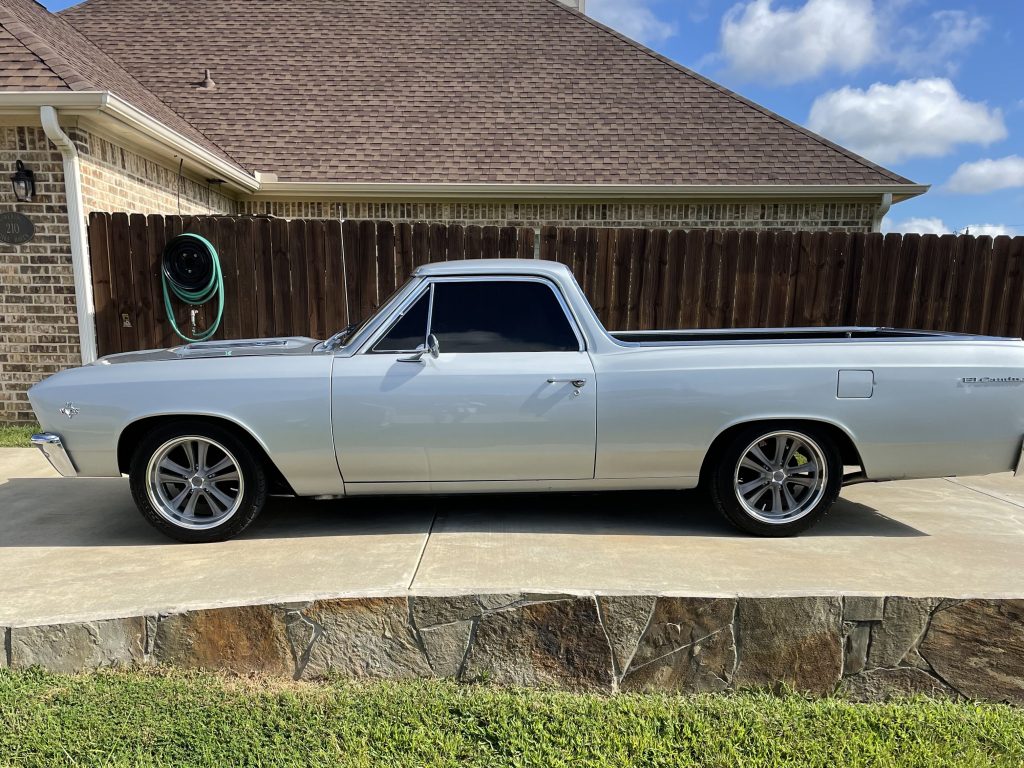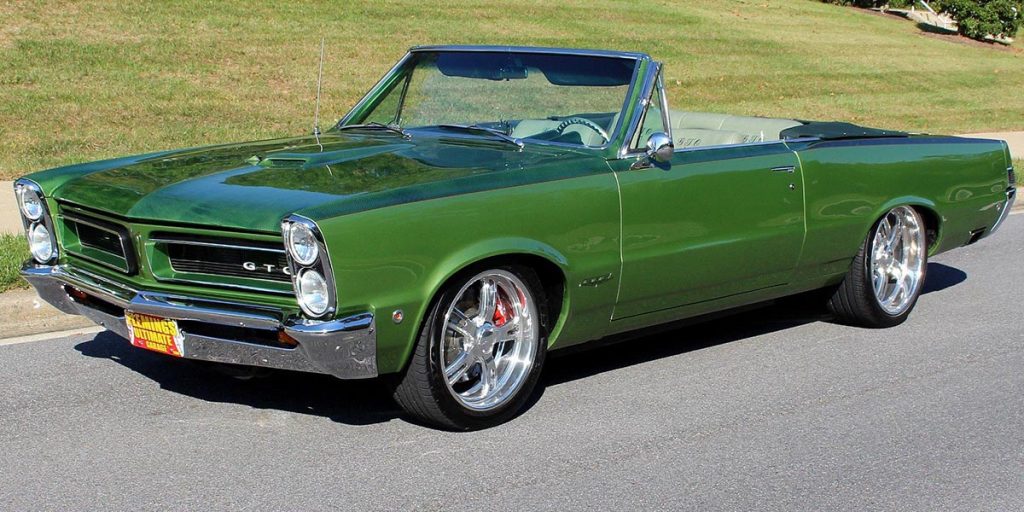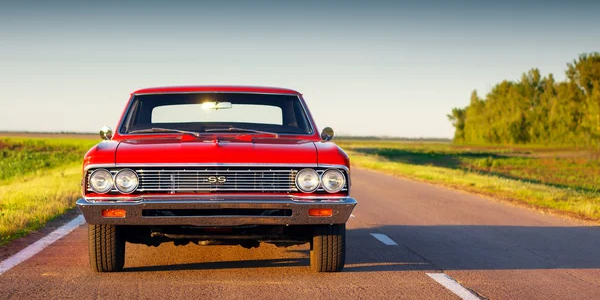Disc Or Drum Brakes: Which One Is Really Better?
Braking technology has come a long way, but one debate still remains—drum brakes versus disc brakes. While modern vehicles primarily use disc brakes, drum brakes are still found in various applications. So which one is really better? Well that depends.
How Drum Brakes Work
Drum brakes operate using a set of brake shoes that press outward against the inside of a rotating drum. When you step on the brake pedal, hydraulic pressure forces the shoes against the drum, creating friction that slows the vehicle.
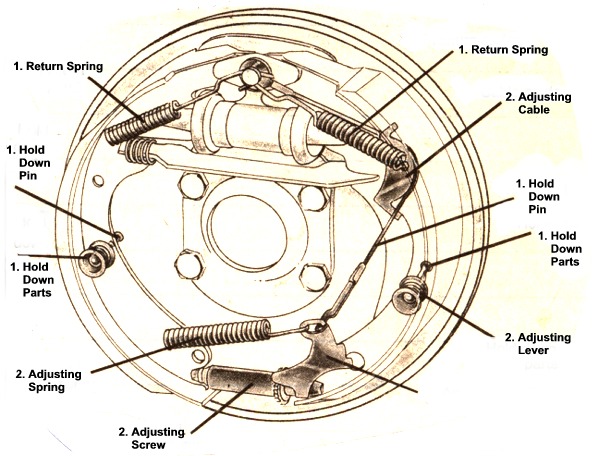
Key Components of Drum Brakes:
Brake Drum – The rotating component attached to the wheel.
Brake Shoes – The friction material that presses against the drum.
Wheel Cylinder – Uses hydraulic pressure to push the brake shoes outward.
Return Springs – Pulls the brake shoes back to their resting position after braking.
When the driver presses the brake pedal, hydraulic fluid forces the wheel cylinder to expand, pushing the brake shoes outward against the rotating drum. This friction slows the wheel, bringing the vehicle to a stop. Once the driver releases the brake pedal, return springs pull the shoes back to their resting position.
How Disc Brakes Work
Disc brakes use a rotor (disc) attached to the wheel hub. A caliper squeezes brake pads against the rotor to create friction, slowing the wheel.
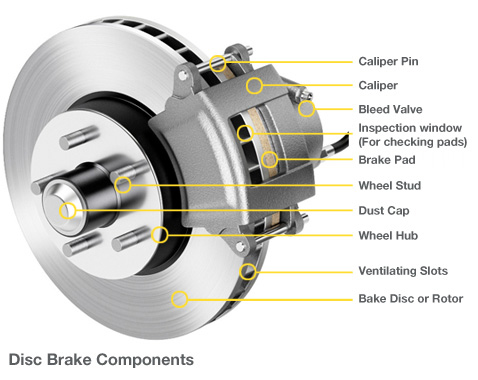
Key Components of Disc Brakes:
Brake Rotor – The rotating disc that brake pads clamp onto.
Brake Caliper – Houses the pistons that apply pressure to the pads.
Brake Pads – The friction material that presses against the rotor.
Pistons – Apply hydraulic force to the brake pads.
When the driver presses the brake pedal, hydraulic pressure forces the caliper’s pistons to push the brake pads against both sides of the spinning rotor. The friction slows the wheel, stopping the vehicle. Once the pedal is released, the caliper releases pressure, and the pads move away from the rotor.
Pros and Cons of Drum Brakes
Advantages of Drum Brakes:
- Lower Cost – Cheaper to manufacture, making them better for budget-friendly applications.
- Better Holding Power – More effective as a parking brake due to their ability to hold the vehicle in place.
- Compact Design – Takes up less space, making them ideal for smaller vehicles or rear axle applications.
- Longer Service Life in Some Cases – In certain conditions, drum brakes wear more evenly than disc brakes.
Disadvantages of Drum Brakes:
- Heat Dissipation Issues – Drums tend to trap heat, which can lead to brake fade and reduced performance.
- Less Effective in Wet Conditions – Water can collect inside the drum, reducing stopping power.
- More Complex Maintenance – Replacing brake shoes, wheel cylinders, and springs can be more time-consuming compared to swapping brake pads.
- Reduced Performance at High Speeds – Less efficient than disc brakes when stopping from high speeds.
Pros and Cons of Disc Brakes
Advantages of Disc Brakes:
- Superior Heat Dissipation – The open design allows for better cooling, reducing brake fade.
- More Effective in Wet Conditions – Water is easily shed from the rotor surface, maintaining braking performance.
- Easier Maintenance – Swapping out brake pads is usually quicker and simpler than replacing drum brake components.
- More Consistent Performance – Provides reliable stopping power across various driving conditions.
- Stronger Braking Force – Generally offers better stopping power, especially at higher speeds.
Disadvantages of Disc Brakes:
- Higher Cost – More expensive to manufacture and replace compared to drum brakes.
- Weaker Parking Brake Performance – Often requires a separate drum brake or electronic system for holding power.
- More Exposure to Dirt and Debris – Open design means contaminants can reach the rotor and pads.
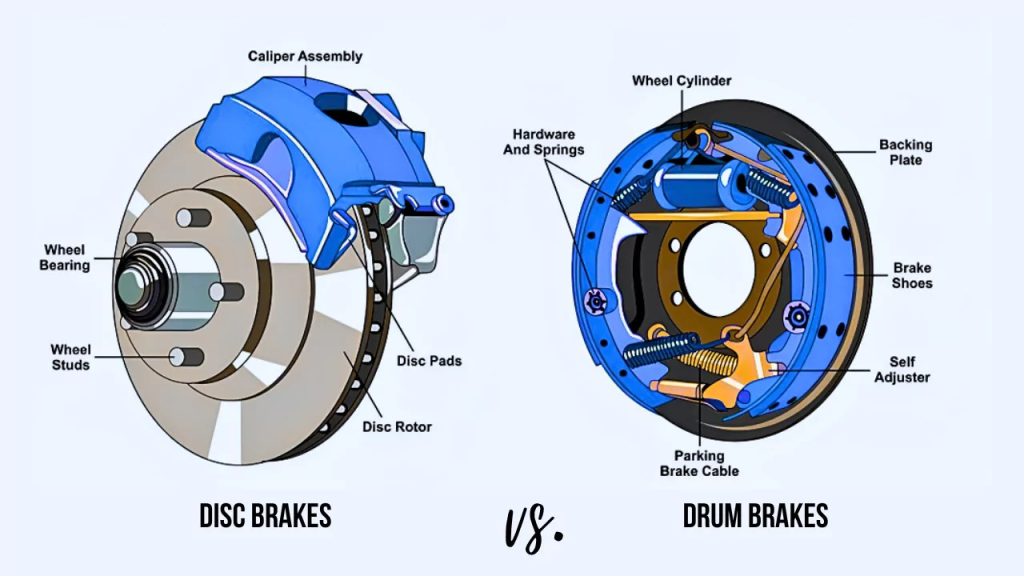
Why Some Vehicles Still Use Drum Brakes
Even with their drawbacks, drum brakes are still found on certain vehicles, usually on the rear wheels of trucks and economy cars. The main reasons include:
- Cost Efficiency – Automakers can reduce production costs by using drum brakes on less critical rear-wheel braking.
- Parking Brake Integration – Drum brakes naturally provide a strong parking brake function without needing additional components.
- Longer Life in Certain Applications – In light-duty use, drum brakes can last longer than discs.
Why Disc Brakes are Preferred for Performance Applications
For sports cars, high-performance vehicles, and even daily drivers looking for optimal stopping power, disc brakes are the go-to choice. Key reasons include:
- Faster Heat Dissipation – Prevents brake fade during aggressive driving or towing.
- Consistent Braking Response – Even in wet or extreme conditions.
- Better Modulation – Allows for more precise braking control.
Why Do Big Rigs Still Use Drum Brakes?
One place where drum brakes are widely used over disc brakes is in big rig trucks. Why is that?
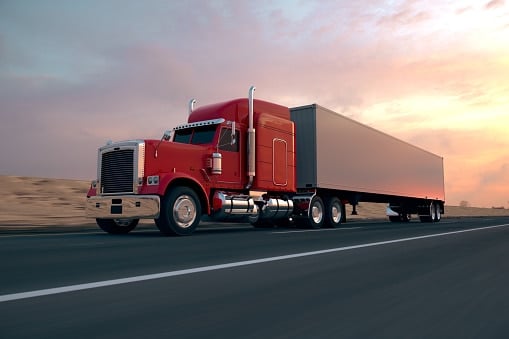
1. Cost and Simplicity
Drum brakes are cheaper to manufacture, maintain, and replace compared to disc brakes. Since big rigs require multiple braking systems (truck, trailer, parking brakes), switching to all-disc brakes would be a massive expense for fleets and owner-operators.
2. More Braking Surface Area
Drum brakes provide more contact area between the brake shoes and drum, which helps with braking force. A large drum brake system can generate high stopping power, even if it doesn’t dissipate heat as well as a disc brake.
3. Proven Durability in Heavy Loads
Heavy trucks regularly haul tens of thousands of pounds, and drum brakes are built to handle extreme loads over long distances. They wear more evenly in stop-and-go conditions and are less likely to warp under constant heavy braking.
4. Built-in Parking Brake System
Drum brakes integrate the parking brake function within the drum itself. In contrast, disc brake systems usually require a separate mechanism to hold the vehicle when parked.
5. Air Brake System Compatibility
Most heavy trucks use air brakes rather than hydraulic systems like passenger cars. Traditional drum brakes work well with air brakes because of their self-energizing effect, where friction helps apply more braking force as the shoes press against the drum.
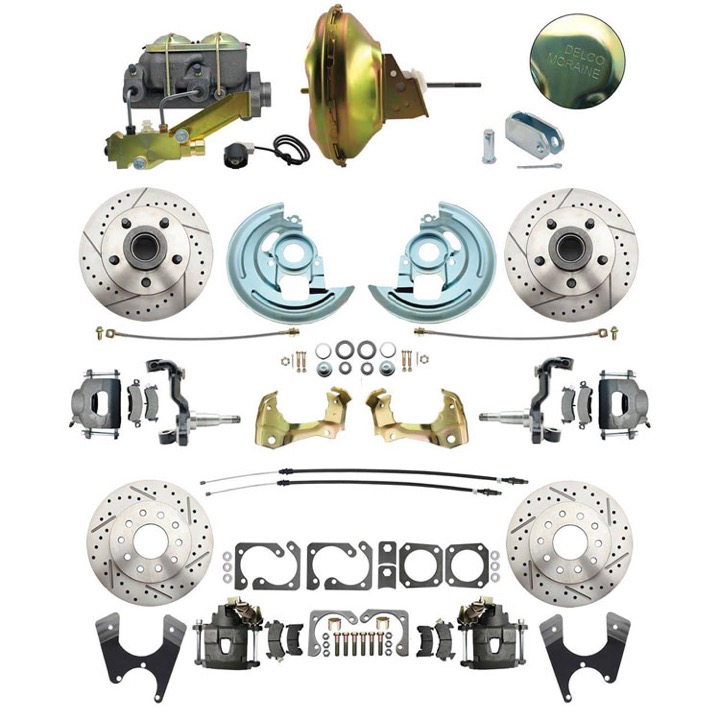
For simplicity’s sake, disc brakes are always going to outperform drum brakes on our classic cars. There are obviously some reasons why people might not want to switch to disc, such as a restoration where they want the car exactly as it came off the assembly line. But for most, disc brakes are the way to go. If you need a set of disc brakes for your classic Chevy, hop on over to SS396.com or give our friendly techs a call at (203) 235-1200!

